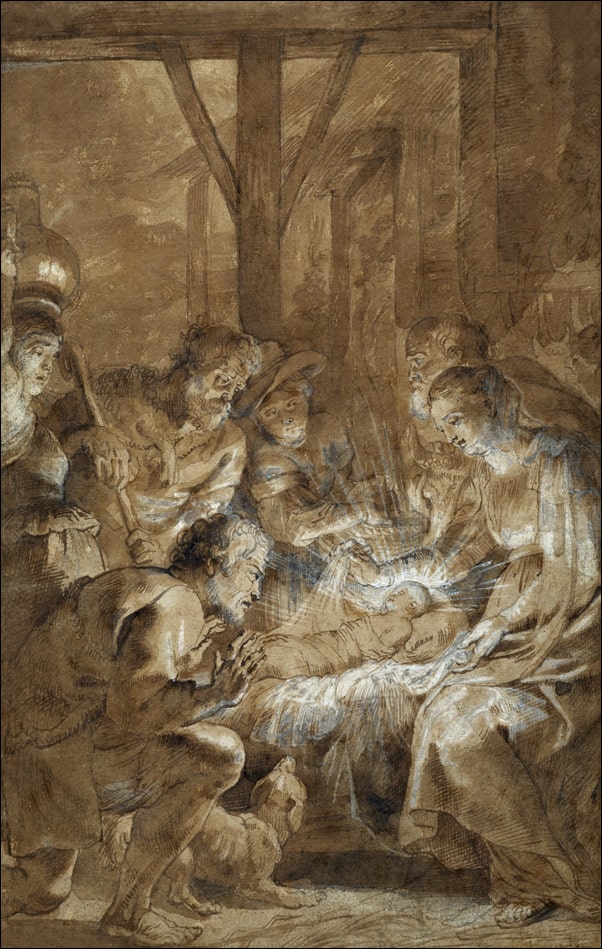The third part of the Christmas Oratorio opens again with a festive chorus, orchestrated with full forces (trumpets, flutes, oboes, oboes d’amore, strings and basso continuo). The text is an expression of joy and praise that frames the story narrated in this part: the shepherds going to worship Child Jesus. The chorus will be repeated in full at the closing of the cantata, in the manner of a “da capo”.
The Evangelist begins the narrative, with a verse from Luke that introduces us to the shepherds after the angels disappear. The choir takes on the role of the shepherds, and in the manner of a mob, they decide to go to Bethlehem. The text of the chorus is also literally taken from the Gospel of Luke and the music very effectively paints the excitement and nervousness of the shepherds.
At this point the action stops. The bass, impersonating the believer, reflects on the consolation and salvation represented by Jesus, and encourages the shepherds to set out on their way. The choir, now representing the community, responds to the bass’s reflection and offers a chorale of thanks.
The libretto continues to celebrate the circumstances with a duet for soprano and bass accompanied by two oboes d’amore. The imitative and intertwined lines suggest the intimacy of Jesus with the soul of the believer.
The next movement picks up the narrative. Three verses from the Gospel of Luke (16-18) describe the arrival of the shepherds at the manger and the reaction of those present.
The last verse of the recitative (19) mentions how Mary “treasured up all these events, reflecting on them in her heart.” This leads to a contralto aria with solo violin, which is considered the only original aria of the Oratorio. The text of the aria represents Mary speaking to her heart and stating that these events will strengthen her faith. It is interesting to observe how the vocal line and the violin come together in unison on the words “fest in deinem Glauben ein” (“firm in your faith”).
After the aria, the contralto summarizes the same ideas with a recitative, and the choir, representing the congregation, sings a chorale in two stanzas contrasting earthly life with eternal life.
The evangelist offers the last verse (20) of the gospel, recounting the return of the shepherds, and the choir follows with a chorale in which Bach inserts a subtle illustration of the word “froh” (joy) with ascending sixteenth notes on the bass line.
The cantata closes with the repetition of the opening chorus.
